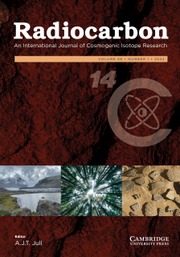No CrossRef data available.
Article contents
Highlighting the value of selecting terrestrial snails for radiocarbon dating based on French Holocene archaeological sites
Published online by Cambridge University Press: 09 October 2025
Abstract
Land snail shells are usually avoided for radiocarbon dating, due to the possible presence of dead carbon, although measurements on certain small species can be reliable. However, terrestrial gastropods, which are often abundant and well preserved in favorable sedimentary contexts, may represent an important source of material for precise dating. In this study, the shell selection method and radiocarbon results are presented, based on about twenty dates, from well-known and reliable archaeological contexts mostly from the Languedoc (southern France) and covering different cultural periods of the Holocene. Chronological controls are provided by dates based on plant remains, archaeological artifacts and stratigraphy, as well as geomorphological and environmental interpretations. The results obtained based on gastropod shells show a good agreement with the expected dates. In some examples, the target period is quite large, making it difficult to determine the degree of accuracy. However, other tests give perfectly synchronous dates between botanical or archaeological material and mollusks. Species selection takes into account that terrestrial gastropods living in the midst of vegetation are less likely to ingest fossil carbon and are therefore better suited for dating, especially wetland species, Succinella oblonga and Vertigo pygmaea. These promising results show the potential of terrestrial shells for dating archaeological sequences when prevailing biological material such as charcoal is lacking or is unreliable.
Information
- Type
- Research Article
- Information
- Copyright
- © The Author(s), 2025. Published by Cambridge University Press on behalf of University of Arizona


